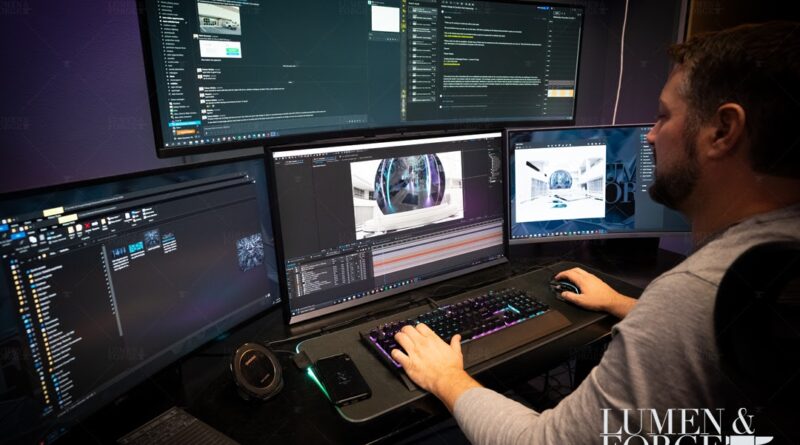The History of 3d Visualization
Early History of 3D Visualization
Since humans first painted on cave walls, art has been representative of the history of our evolution. Visionary artists such as Filippo Brunelleschi and Leonardo da Vinci were the pioneers of visual art based on the symmetry and precision of mathematics. They, and others like them, are responsible for the incredible advances that humans have made in architecture and engineering and ultimately our ability to accurately represent the physical in a 2 dimensional space. Fast forward to the 20th century and the early days of computing when we moved from awkward ‘Turing’ machines and vacuum tubes and began to experiment with sophisticated programming. In the early 1960’s Ivan Sutherland invented a program called ‘Sketchpad’ which revolutionized how computers were used to create visualizations.
The Invention of Computers
Until Sutherland, computers were essentially calculators to perform intricate mathematics for military and scientific purposes. Sutherland, however, used them to interactively render architectural concepts in 3 dimensions. Designers and artists were brought into the active creations of these renderings and the field of 3D design was changed forever. Ivan Sutherland is the father of Computer Aided Design (CAD) which has become a massive industry of creatives and software developers. Eventually computers were taught ‘shading’ algorithms which made visual concepts even more realistic.
By the 1990’s, computer modeling had become streamlined and the industry continued to grow and develop. Software became more affordable and efficient including ‘open source’ programs that were free to use, effectively lowering the barrier of entry for new artists and developers to gain access to this emerging tech. The demand for 3D art and visualization has grown tenfold.. Companies that want to appear relevant and innovative need 3D graphics and animations for marketing and advertisements and architects and engineers need it for structural and conceptual design.
From 3D modeling on a 2D monitor to using a ‘Virtual Reality’ headset, the industry continues to evolve and develop as technology does too. Now artists use programs that allow them to explore their images in a VR space and create designs based on the experience of the design not just on it’s look. As well, 3D visualization can be used with ‘Augmented Reality’ programs for educating the next generation of doctors and engineers.
Artists who work in 3D design get highered by academic institutions to create 3D representations of human anatomy allowing medical students to explore the intricacies of the human body in a safe and sanitary way. Pilots rely on realistic simulators to practice flying and landing commercial airplanes, all made possible by artists and designers that create an accurate simulation of the flight experience. A new and emerging technology use case for 3D visualization is with interactive 3D environments for virtual communities to form around art and music in what is being called the metaverse.

Conclusion: The Future
From painting on cave walls to the Sistine Chapel to using a stylus in the metaverse, the full story of 3D visualization has yet to be told. As computer hardware and software becomes more advanced and accessible, 3D visualization is increasingly being used in new applications and the use cases increase as the technology develops and with the advancements in screen resolution the future of 3D visualization gets brighter and brighter every day.



